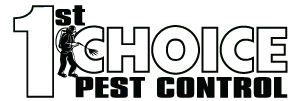Key Indicators of a Hidden Pest Problem in Your Home and How to Spot Them Early
Hidden Pest Problem can be a homeowner’s worst nightmare. It can take a long time before anyone even realizes that they are present on your property, nesting in the walls, the attics, and the basements. Ranging from chewing on electrical wirings to soiling foods to be consumed, these vermins cause costly damages to properties and health risks to your family.
It is therefore important to identify these pests at a very early stage to prevent the huge losses that may come with it. It is for this reason that many of the early signs are often hard to notice and may include things like hearing voices and sounds,(smell) getting a whiff of something that does not exist or seeing faint footprints in places where dust is usually an issue. It is important to learn what to look for and then, you are in a position to prevent such pest issues from going unnoticed and becoming full-blown disasters.
Striking Unusual Sounds in Walls and Ceilings
The sounds may indicate that there is some hidden infestation as it could be coming from the walls, ceilings, and floors. Mice, bats, and other insects like to hide in the dark and specifically at night.
Common Sounds to Listen For:
Scratching: Rodents like mice and rats are infamous for scratching away surfaces. Soft squeaking sounds, usually at night, often point to the presence of rodents hiding behind walls or even in the attic.
If you find a soft buzzing near windows, vents or the cracks on walls, it may indicate some bees, wasps, and/or hornets in the place. Be careful since they will become viciously aggressive if disturbed.
Scurrying is the swift and agile running of small animals. Such scampering noises mostly come from tiny mammals like mice or squirrels.
How to Identify:
Be keen to the time and location of the noise occurrences. Be on the lookout for more evidence, such as feces or some shredded insulations, especially around vents, attics, basements, and crawl spaces.
Unpleasant Odors
A hidden infestation of pests often produces distinct odors that are hard to ignore. The signature smell may help determine the kind of pest at work.
Common Odors to Watch For:
- Musty Smell: The cockroaches cause a stale and musty smell, especially at damp and dark places, which are the basement, kitchen, and bathroom. A pungent smell of decay hangs in the air, suggesting that a rat or perhaps a larger animal has met its end within the walls or in some concealed corner.
- Ammonia Smell: This is a result of the pee from the rats and mice, which has an ammonia-like smell. In case you sense the smell inside your cabinets, drawers, or attics, then that is the work of rodents.
How to Identify:
Trail the smell to the strongest point. Most of the dark recesses, such as behind appliances, under sinks, or inside an attic hold evidence of a pest infestation.
Unidentified Damage Within Your Home
Pests can be highly destructive. They gnaw on materials, create nests, and leave trails of destruction.
Common Damage Indicators:
- Gnaw Marks: Rodents chew on everything from wood to electrical wiring. Look for small nips on furniture, walls, and food storage containers.
- Holes and Tunnels: Termites, ants, and rodents often create tunnels in wooden structures or holes in flooring. If you find holes or tunnels, it’s unlikely they formed organically.
- Damaged Plants: Unexplained damage or holes in houseplants could indicate a pest infestation by slugs, snails, or insects.
How to Identify:
Inspect the damaged area for additional signs such as droppings, nests, or insect exoskeletons.
Visible Pest Droppings and Urine Trails
The most definitive sign of a pest problem is the presence of droppings or urine trails. Each pest leaves behind unique excrement, which can help identify the species.
General Droppings to Look For:
- Rodent Droppings: Small, dark droppings that resemble grains of rice. They are often found near food sources, in cabinets, and along baseboards.
- Cockroach Droppings: Resembling coffee grounds or black pepper specks, cockroach droppings are typically found in kitchens, bathrooms, or basements.
- Bat Guano: Small, dark pellets that crumble into a powdery substance, often near entry points such as vents or chimneys.
How to Identify:
Use a flashlight to inspect dark, hidden areas like attics, basements, cupboards, and behind large appliances. Avoid touching droppings, as they may carry diseases. Contact a professional pest control service for safe removal and identification.
Tracks and Grease Marks
Pests often leave tracks, smudges, or grease marks along their travel routes. Rodents, in particular, tend to follow the same paths, leaving behind greasy trails due to their fur.
Typical Prints to Look Out For:
- Rodent Prints: Look for small footprints, tail marks, or smudges along walls, baseboards, and floors. You might also find dark, greasy marks where their fur brushes against surfaces.
- Insect Trails: Ants and other insects leave indistinct trails, which may appear as a line of powder or dust.
How to Identify:
Use a flashlight to inspect areas like attics, under sinks, and along baseboards. Dusting areas with flour or talcum powder can help reveal fresh tracks.
Nesting Materials and Shelters
Pests create nests using materials they find around the house. Finding these materials in corners or hidden spaces could indicate that pests are already dwelling in your home.
Common Nesting Signs:
- Rodent Nests: Rats and mice build nests using shredded paper, fabric, insulation, and other soft materials. These nests are often found in secluded areas like attics, basements, and inside walls.
- Insect Nests: Bees, wasps, and hornets construct nests in attics, garages, and sheds. Termites build mud tubes along your home’s foundation to maintain a humid environment.
How to Identify:
Check storage spaces, attics, garages, and behind large furniture for nests or clumps of unusual materials.
Damage to Food and Food Packaging
Unexplained holes in bags of grains, flour, or pet food are signs of an infestation. Rodents and pantry pests seek food sources in kitchens and pantries.
Common Signs of Food Damage:
- Chewed Packaging: Rodents chew through plastic, cardboard, and paper packaging to access food. Look for bite marks, holes, and spilled food.
- Clumps and Webbing: Pantry pests like moths and beetles leave clumps of food particles and fine webbing inside containers.
How to Identify:
Inspect your pantry and kitchen cupboards for signs of food tampering. Store food in sealed, airtight containers to prevent pest access.
Structural Damage and Changes
Some pests cause significant structural damage, weakening wood and creating visible changes to your home.
Common Signs of Structural Damage:
- Sagging Floors and Walls: Termites consume wood from the inside, leading to weakened structures that sag, warp, or sound hollow when tapped.
- Bubbling or Peeling Paint: Subterranean termites cause moisture problems that can result in paint bubbling or peeling.
- Wood Dust or Frass: Piles of fine wood dust near wooden structures, such as window sills or door frames, indicate wood-boring insects.
How to Identify:
Examine wooden structures inside and outside your home. Use a screwdriver to tap or probe for hollowness or weakness.
Unexplained Health Problems
A hidden pest infestation can lead to various health issues for occupants, including allergies, asthma, and unexplained bites.
Common Health Symptoms:
- Allergies and Asthma: Cockroach droppings, shed skin, and saliva can trigger allergic reactions and asthma symptoms, especially in children.
- Itchy Bites: Unexplained itchy bites could be caused by bed bugs, fleas, or mites.
- Respiratory Issues: Mold and mildew resulting from rodent infestations can cause respiratory problems.
How to Identify:
If you experience persistent health issues at home, inspect living spaces for pests. Check mattresses, bedding, and upholstered furniture for bed bugs and basements for moisture and mold.
Conclusion:
When the pest infestation is not immediately noticeable, it means that it has a potential of compromising the structural foundation of your home as well as the health of your family members. This way you will notice the signs from the start and you will act on them before things get out of hand. If you observe any of these signs, please seek the services of an expert pest control service provider; 1st Choice Pest Control. Our team of professionals will undertake a thorough inspection of your home and help us find lasting solutions to the pests problems.
The longer pests stay in your property, the worse the damage they can cause to your property and thus, early detection is important. The three cardinal principals that can help you ward off all the unwanted guests are prevention, periodic check-up, and immediate response.
If you have seen any signs of a secret pest infestation, then it is advisable to get in touch with 1st Choice Pest Control. This means that our skilled technicians are able to diagnose and treat pest problems since they are adequately armed with the information and resources that will help them to deal with pests. Call for pest inspection now to shield your family and your home!

